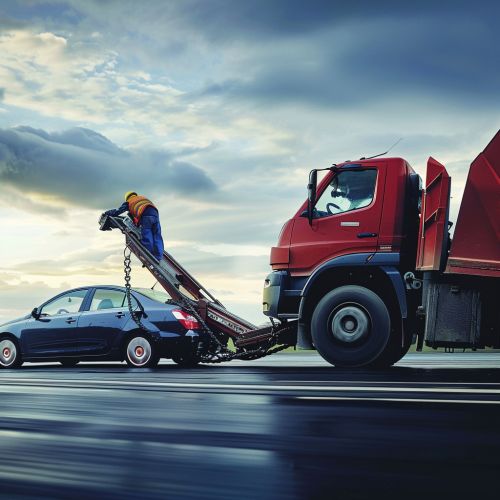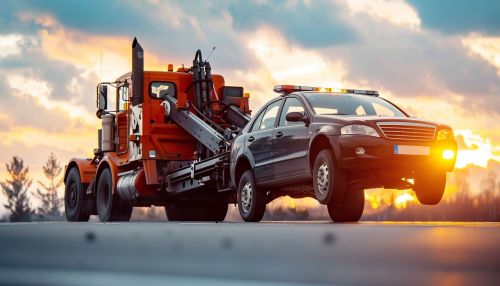Towing
Overview
Towing is the process of pulling or drawing behind a chain, line, bar, or some other form of couplings. Towing is most visibly performed by road vehicles, but anything from waterborne vessels to tractors to people can tow cargo. Tugboats are used to maneuver larger vessels and barges. Over land, the tow is often used to move vehicles or machines that cannot move themselves.


Types of Towing
There are several types of towing each with its own benefits and drawbacks. The type of towing that is suitable depends on the situation and the type of vehicle being towed.
Flatbed Towing
Flatbed towing involves a truck equipped with a flatbed trailer that inclines to ground level, allowing the vehicle to be loaded onto it for transport. This method is often used for vehicles that have been in an accident, have multiple flat tires, or are four-wheel drive or all-wheel drive.
Two-Wheel Towing
Two-wheel towing, also known as dolly towing, involves towing a vehicle with two of its wheels off the ground. The two wheels that remain on the ground are placed on a device known as a tow dolly.
Four-Wheel Towing
Four-wheel towing involves towing a vehicle with all four wheels off the ground. This is often done by placing the vehicle on a flatbed truck or using a trailer.
Towing Equipment
Towing requires a variety of equipment, including tow trucks, tow bars, hitches, and chains.
Tow Trucks
Tow trucks are vehicles specially designed and equipped for towing. They come in various types, including boom, hook and chain, wheel-lift, flatbed, and integrated.
Tow Bars
A tow bar is a device used for connecting the towing vehicle to the towed vehicle. The tow bar is attached to both vehicles in such a manner as to allow swiveling so that the vehicles may turn independently and make turns on the road.
Hitches
A hitch is a device that attaches to the chassis of the towing vehicle. It provides the connection point for the tow bar or other towing equipment.
Chains
Chains are often used in towing to connect the towed vehicle to the towing vehicle. They provide a secondary line of safety in case the primary connection fails.
Towing Safety
Towing involves certain safety considerations to avoid injury to people or damage to property.
Weight Distribution
Proper weight distribution is crucial in towing. The weight of the towed load must not exceed the weight capacity of the towing vehicle, tow bar, hitch, or other towing equipment.
Towing Speed
Towing speed should be adjusted according to the weight and size of the towed load. The heavier the load, the slower the towing speed should be.
Towing Laws
Towing laws vary by state and country. It's important to be aware of the laws in the area where you're towing, including maximum towing speed, maximum towed load weight, and requirements for lights and mirrors.
Towing Techniques
There are several techniques that can be used to improve the safety and efficiency of towing.
Loading
Proper loading involves ensuring the towed load is evenly distributed across the towing equipment. This helps to maintain stability while towing.
Driving
Driving while towing requires additional caution. The towing vehicle will need more distance to stop, and turns must be taken wider than normal to accommodate the towed load.
Unloading
When unloading, it's important to do so in a safe and controlled manner. The towed load should be slowly and carefully moved off the towing equipment.
